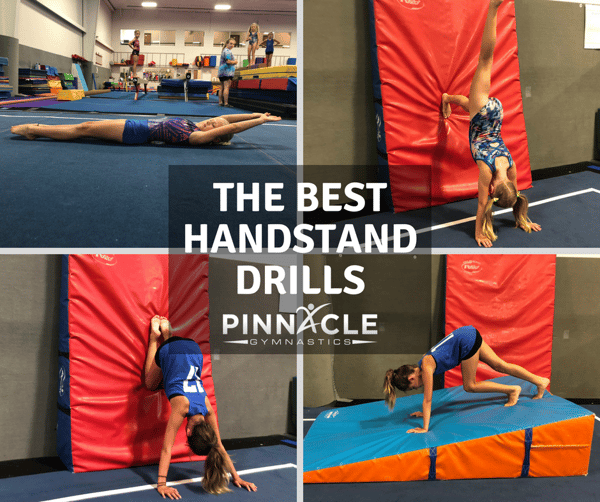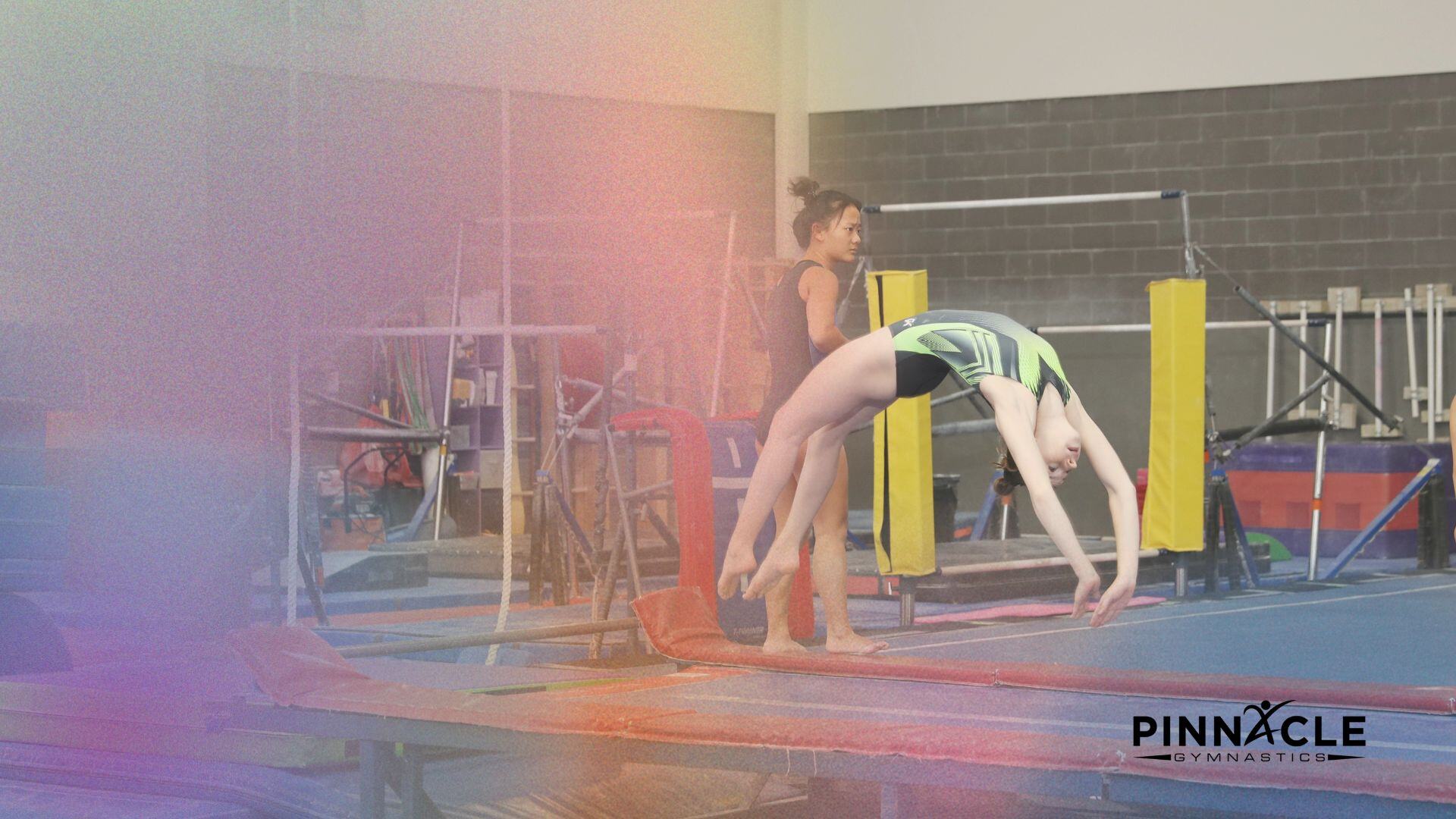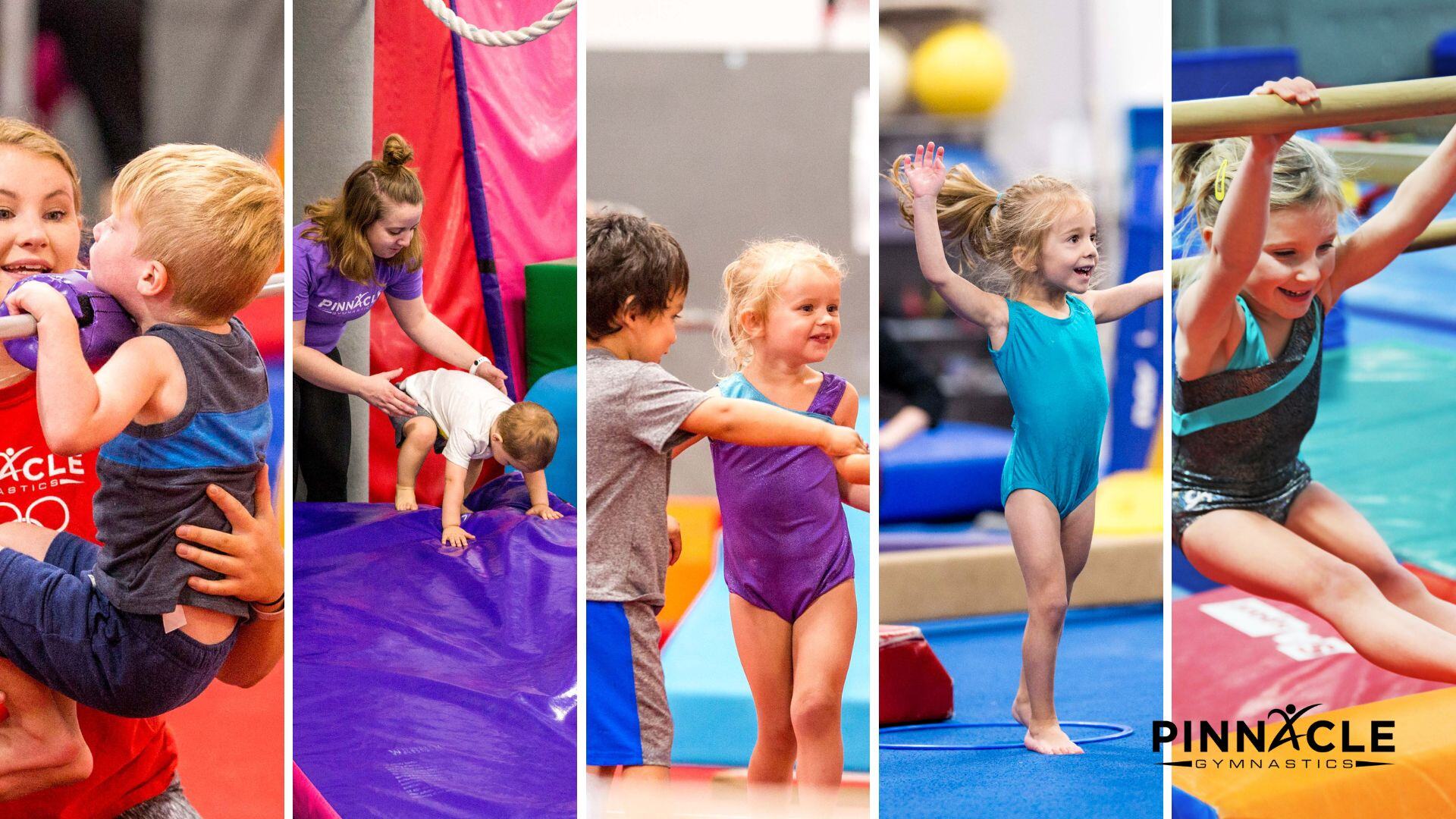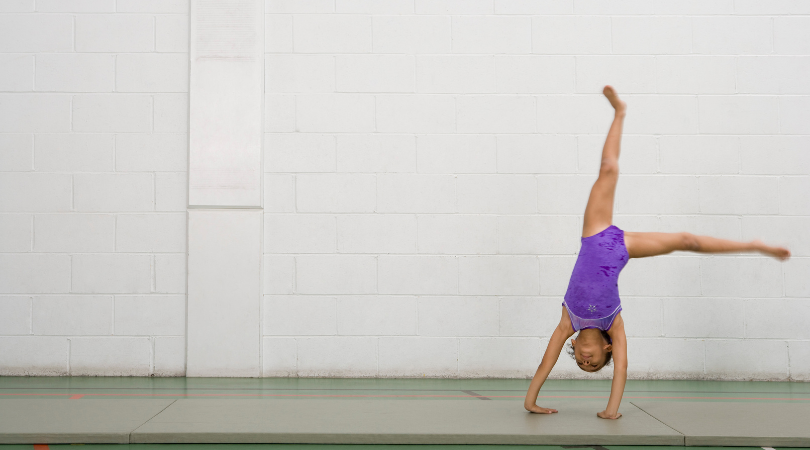The 5 Best Handstand Drills for Beginners
The handstand is one of the most versatile skills in gymnastics. It is the building block for many of the more advanced gymnastics skills such as a cartwheel, round off, back walkover, front walkover, back handspring, front handspring, and many more. A handstand seems like a simple skill to master; simply put your hands on the ground and kick your feet above your head. However, doing a perfect handstand is much more complicated than that. One must have the arm strength to keep their arms straight, the core strength to keep their trunk straight, and the leg strength to pull their knees and feet together.
What Does a Perfect Handstand Look Like?
So, what does a perfect handstand look like? Absolute perfection is impossible, but many gymnasts get pretty close. A perfect handstand starts with the hands. Hands should be flat on the ground with the fingers spread apart for the maximum sturdy base. Arms should be straight and shoulder width apart. The head should be in a neutral position, neutral meaning with the ears directly in between the arms. The gymnast’s back should be completely straight, no arching and no rounding. (Getting a completely straight back is much easier said than done). Both legs should be straight, and the knees and ankles should be together. Toes should be pointed. A perfect handstand should look like a straight line from toe to wrist.
A perfect handstand takes time. How much time depends on many things. We all know that children progress at different rates. What takes one child barely a month to master could take another child over a year to master. It is also important to the development of the handstand that it is taught following correct progressions (gymnastics classes for kids can offer these in a safe and structured environment). Think of the handstand as a building. You must start from the bottom and work your way up. Below is a list of the five best handstand drills. They start out slow and simple, and each builds up to a successful handstand.
How to Build the Perfect Handstand: 5 Best Handstand Drills
- Bear Walks Down an Incline
One of the trickiest parts of a handstand for beginners is being able to keep their arms straight. Being able to keep the arms straight is most important for safety reasons. Bent arms mean you fall on your head. Bent arms are also considered a break in form. Bear walks down an incline is a great drill to condition your arms to stay straight. Bear walks help to build strength in the arms as well as in the back. Both are important for handstands.Much of gymnastics is building habits. The bear walks help to create the habit of keeping the arms straight while pushing down into the floor. In addition to keeping the arms straight, bear walks also gradually get the gymnast used to being upside down.
- Squish a Foamy Friend
Another tricky part of perfecting the handstand is being able to make your body straight. Often times gymnasts will think that their body is straight when it is actually in an arch or hollow position. One of the easiest ways to get used to the proper straight handstand position is to do it laying down on the floor. Gymnasts can lay on their backs on the floor with straight arms above their ears and straight legs out with ankles and knees touching. Now here is the tricky part. When laying down like this on the floor gymnasts will still have a slight arch in their back. It is the natural curvature of the back and can be tricky to correct. Place a foamy friend under the arch of the gymnast’s back and ask them to squish it into the floor. This will create the optimal straight body, and will condition the gymnast’s muscles to become used to being straight.
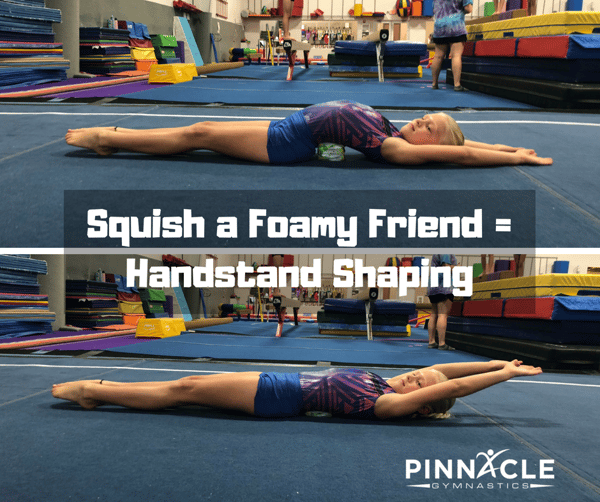
- Walk Knees up the Wall
This is a great drill to get gymnasts more comfortable with being upside down. Being upside down is unnatural for most people, so it takes some getting used to. Gymnasts can stand with their backs towards a wall, bend forward to place their hands flat on the floor, and then gradually walk their knees up the wall until their hips are at a ninety-degree angle. The gymnast’s shoulders should be directly over their hands, and the gymnast’s hips should be directly over their shoulders. When doing this drill the gymnast should focus on keeping their head in between their arms by looking up at their knees. This will help keep their backs straight as well. When the gymnast can hold this station for at least thirty seconds they will be ready to move on to the next drill.
- Walk Feet up the Wall
This drill is similar to the one above, but adds the challenge of having straight legs. It is also easy to modify to make more challenging for gymnasts who are ready to progress. It is also great for getting the gymnast comfortable with being upside down, as well as being able to get into the correct straight back body shape. The gymnast stands with their back to a wall, bends forward to place their hands flat on the floor, then gradually walk their feet up the wall until their legs are in a horizontal position. The gymnast’s shoulders should be directly over the hands, hips should be directly over the shoulders and at a ninety-degree angle, feet should be flat against the wall. The gymnast should focus on keeping their head in between their arms by looking up at their feet. Once the gymnast is comfortable in this position, then they can lift one foot off the wall and into the air. The gymnast’s foot should be directly over the hip, creating a straight line from foot to hand.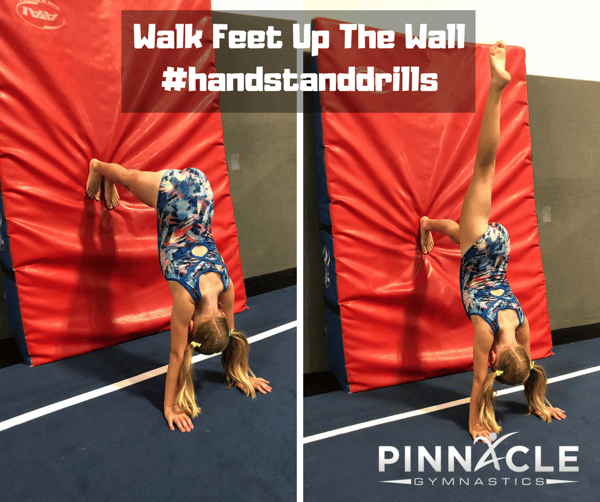
- Say “Hi” to a Friend
When the gymnast is ready to kick into a handstand it is common for basic form to go out the window, especially during the first few unsupportedor unspotted handstands. One of the most fun and simple ways to check form is by saying “hi” to a friend. Partner up two gymnasts: a handstander and a friend. The friend should stand a safe distance behind the gymnast doing the handstand so as not to get kicked. When the gymnast kicks to a handstand they should look back at their friend and say “hi.” This ensures that the gymnast doing the handstand keeps their head in between their arms, which will help with overall shoulder and back form. This drill can be modified in many ways; the friend can hold up fingers and the gymnast has to say how many fingers were held up, the friend can hold up a colored card and the gymnast must name the color, etc.
Conclusion
There are hundreds of amazing handstand drills out there. The five above are a great way to get started on the handstand journey. Gymnastics is more than just handstands. There are incredible health benefits of gymnastics, as well as social lessons. Check out a gymnastics class near you today!

